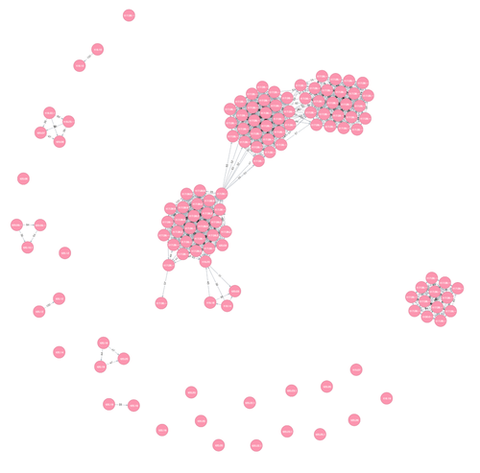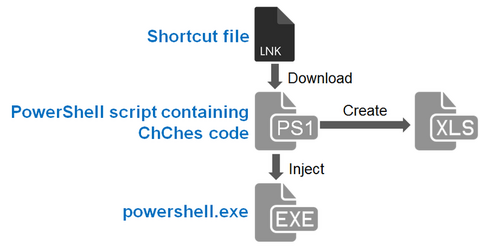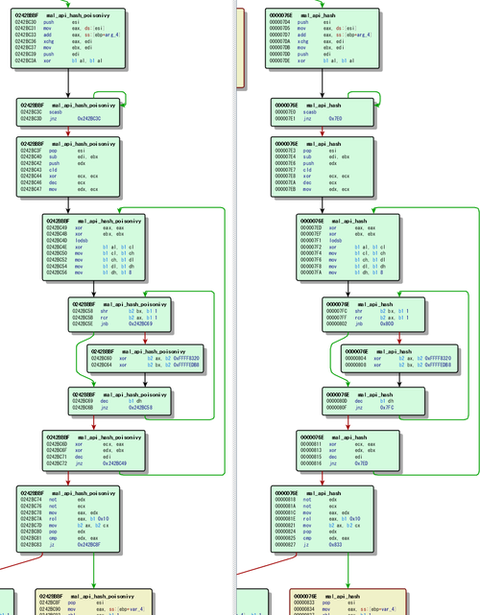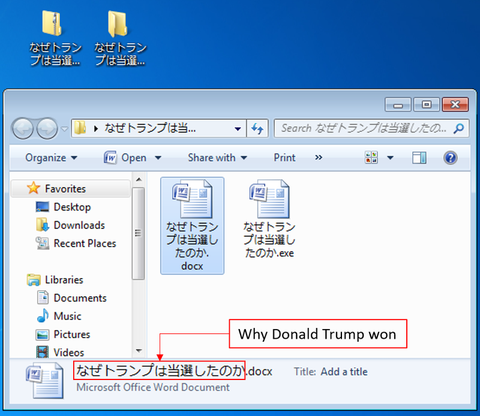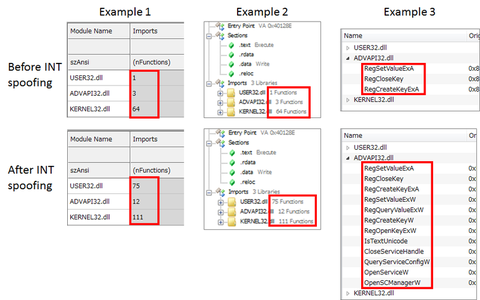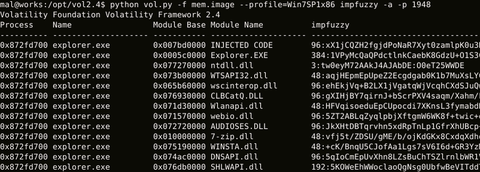Hi again, this is Shusei Tomonaga from the Analysis Center. This entry introduces a malware clustering tool “impfuzzy for Neo4j” developed by JPCERT/CC. Overview of impfuzzy for Neo4j impfuzzy for Neo4j is a tool to visualise results of malware clustering using a graph database, Neo4j. A graph database is a database for handling data structure comprised of records (nodes) and relations among the records. Neo4j provides functions to visualise registered...
-
-
Hi again, this is Shusei Tomonaga from the Analysis Center. In this article, I’d like to share some of our findings about ChChes (which we introduced in a previous article) that it leverages PowerSploit [1] – an open source tool – for infection. Flow of ChChes Infection The samples that JPCERT/CC confirmed this time infect machines by leveraging shortcut files. The flow of events from a victim opening the shortcut...
-
Hi again, this is Shusei Tomonaga from the Analysis Center. PlugX is a type of malware used for targeted attacks. We have introduced its new features in the blog article “Analysis of a Recent PlugX Variant - ‘P2P PlugX‘”. This article will discuss the following two structural changes observed in PlugX since April 2016: the way API is called the format of main module changed from PE to raw binary...
-
Since around October 2016, JPCERT/CC has been confirming emails that are sent to Japanese organisations with a ZIP file attachment containing executable files. The targeted emails, which impersonate existing persons, are sent from free email address services available in Japan. Also, the executable files’ icons are disguised as Word documents. When the recipient executes the file, the machine is infected with malware called ChChes. This blog article will introduce characteristics...
-
When analysing Windows executable file type (PE file) malware, a tool to parse and display the PE file’s structure (hereafter “PE analysis tool”) is often used. This tool enables referring to a list of APIs that the malware imports (Import API) and functions that it exports. By analysing the data, it is possible to presume the malware’s function as in communicating with external servers or creating registry entries, etc. In...
-
Hi, this is Misaki Kimura from Watch and Warning Group. Another new year has come and gone, and as I look back over about the significant security trends that took place in 2016, it is needless to mention that security threat landscape is ever evolving and increasingly complex. As a basis for what we can prepare for 2017, I’d like to review security headlines in 2016 by referring to the...
-
Hi, this is Moto Kawasaki from Global Coordination Division. It has been a little while since I wrote about the CyberGreen Project last time, and I would like to update the achievements of the Project. The most impressive news in the first half of this fiscal year 2016 (Apr-Sep in Japan) is the renewal of its web site. Please have a look at the Info site and you'll find nice...
-
Hi again, this is Shusei Tomonaga from the Analysis Center. Today I will introduce a tool “impfuzzy for Volatility”, which JPCERT/CC has created for extracting known malware from memory images and utilises for analysis operations. Malware Detection in Memory Forensics To judge if a file type malware sample is a known kind, the easiest and fastest way is to check the hash value (e.g. MD5 or SHA 256) of the...
-
A shortcut file, also referred to as a shell link, is a system to launch applications or to allow linking among applications such as OLE. As we introduced in a previous blog post “Asruex: Malware Infecting through Shortcut Files”, shortcut flies are often used as a means to spread malware infection. Generally, shortcut files contain various types of information including the dates and environment that the shortcut file was created....
-
Hi all, this is Yuka from Global Coordination Division and also serving as APCERT Secretariat. We are happy to announce that we have just finished one of the big tasks for this year – the host of APCERT Annual General Meeting Conference 2016, which was held on 24-27 October at Royal Park Hotel in Tokyo. After the official establishment of APCERT in 2003, its annual conference had never been held...

